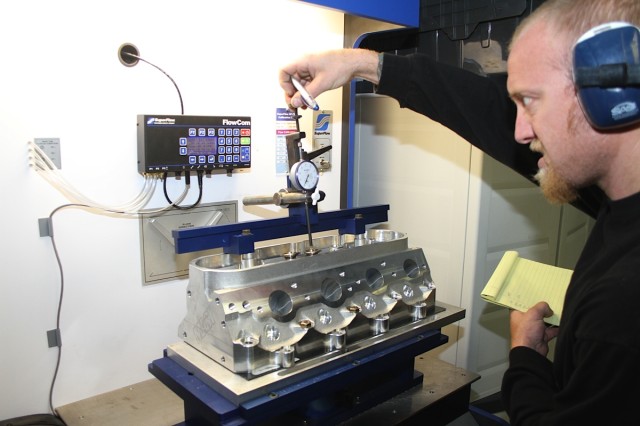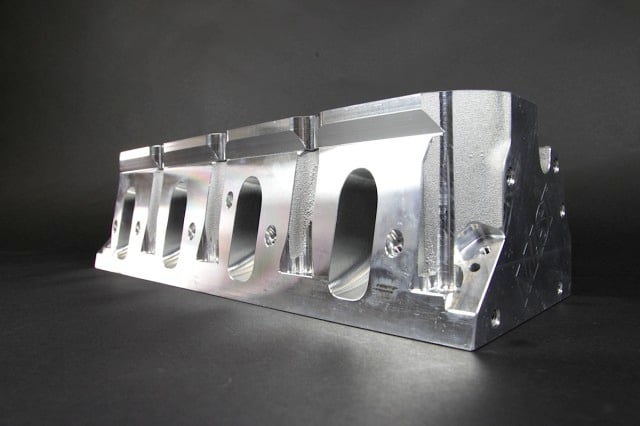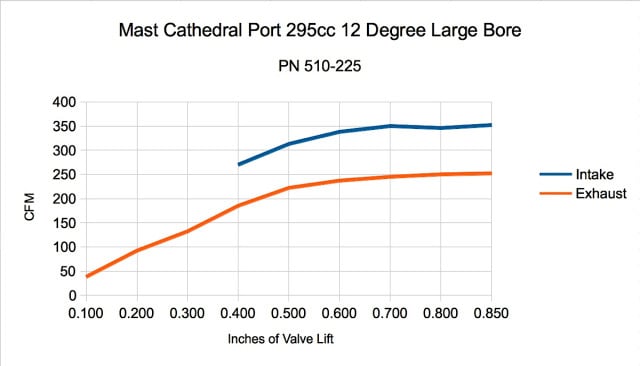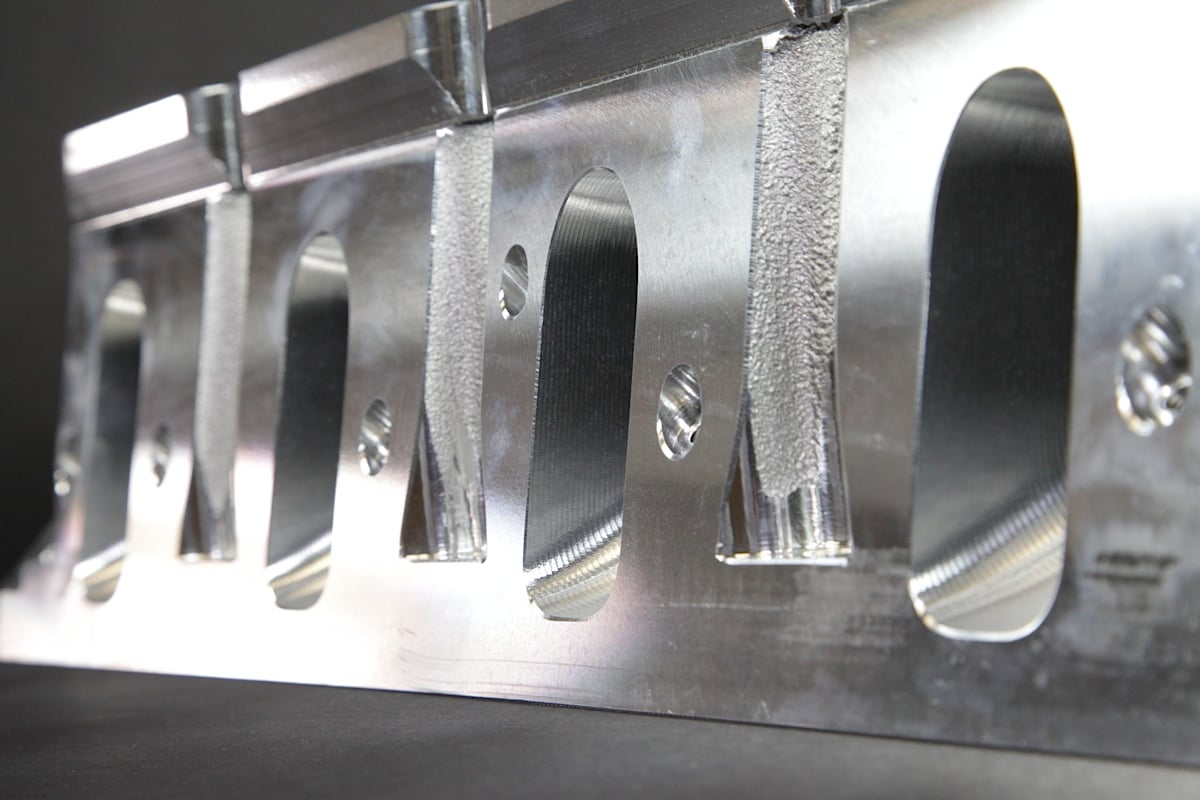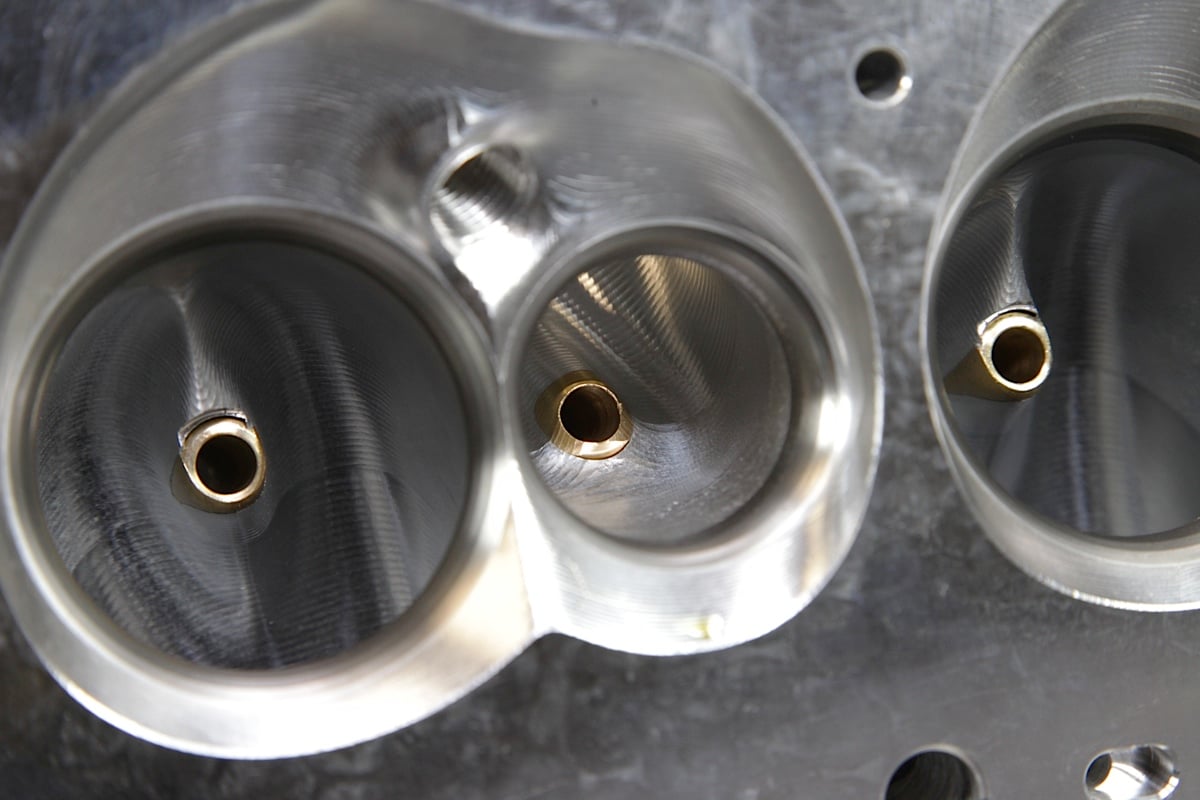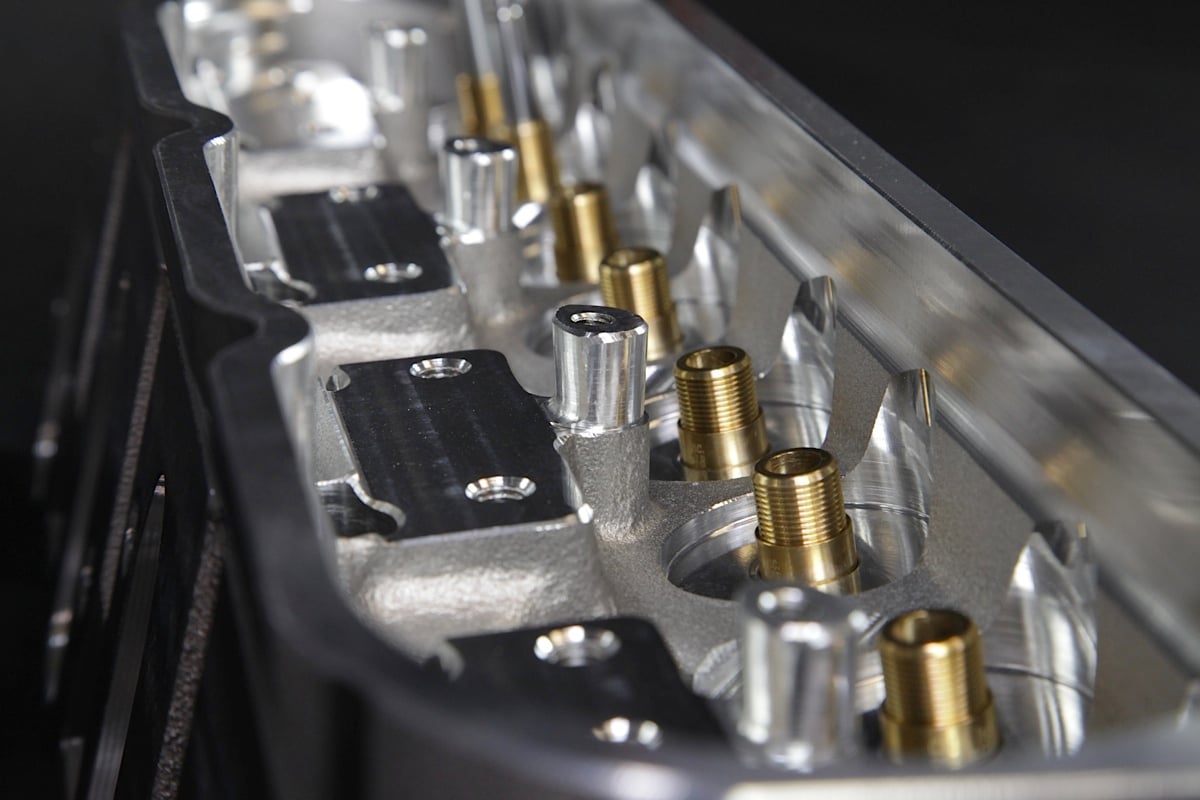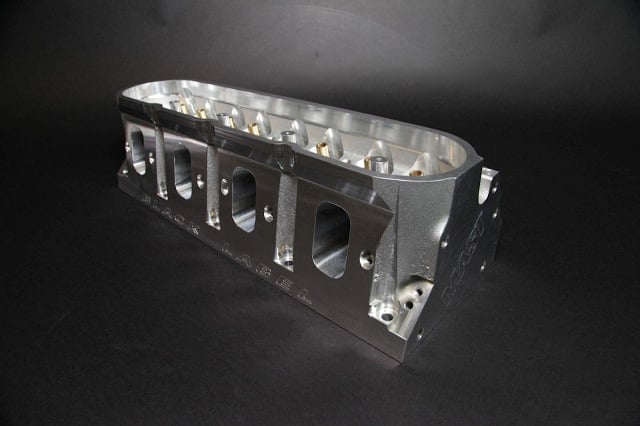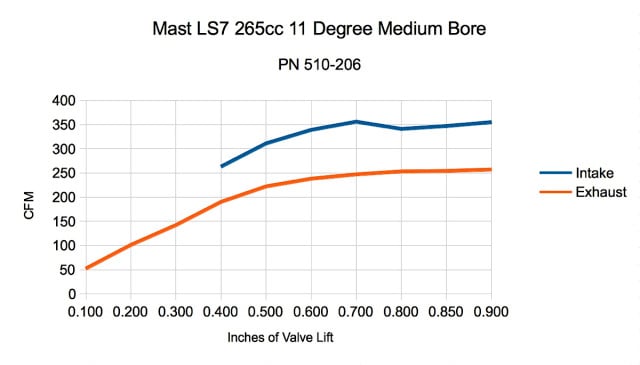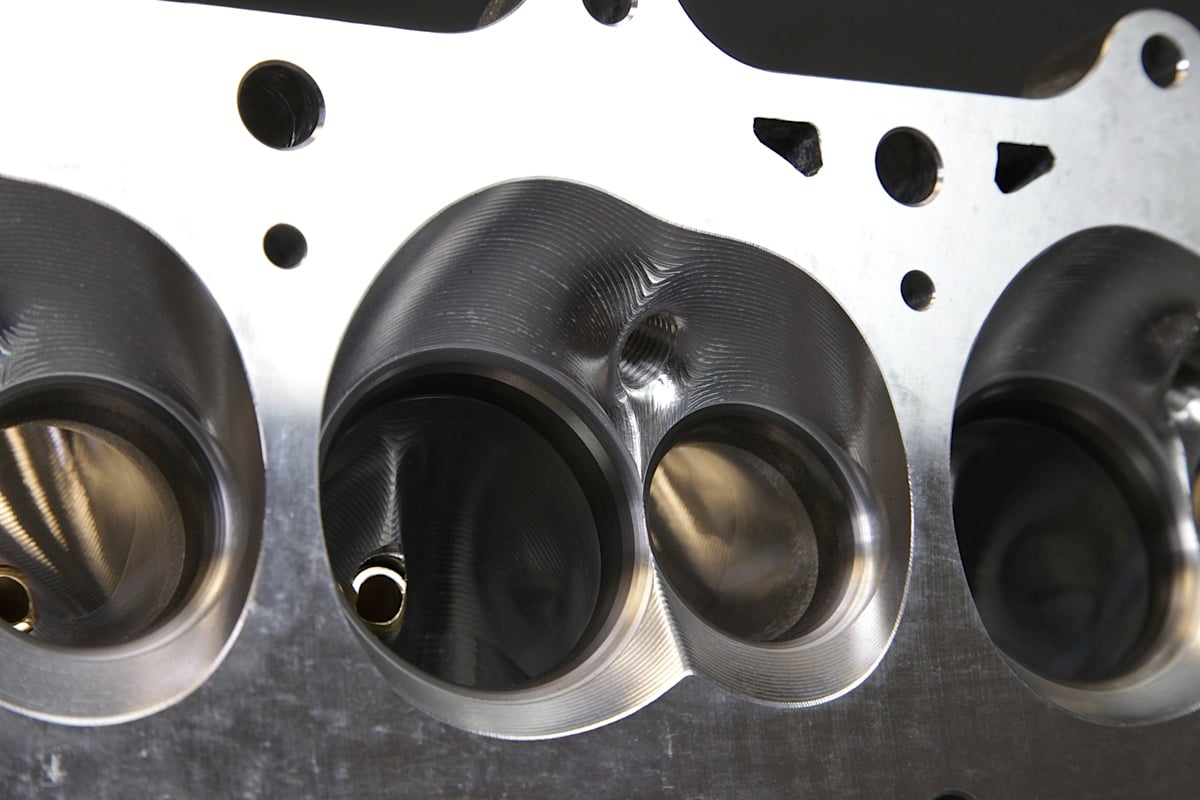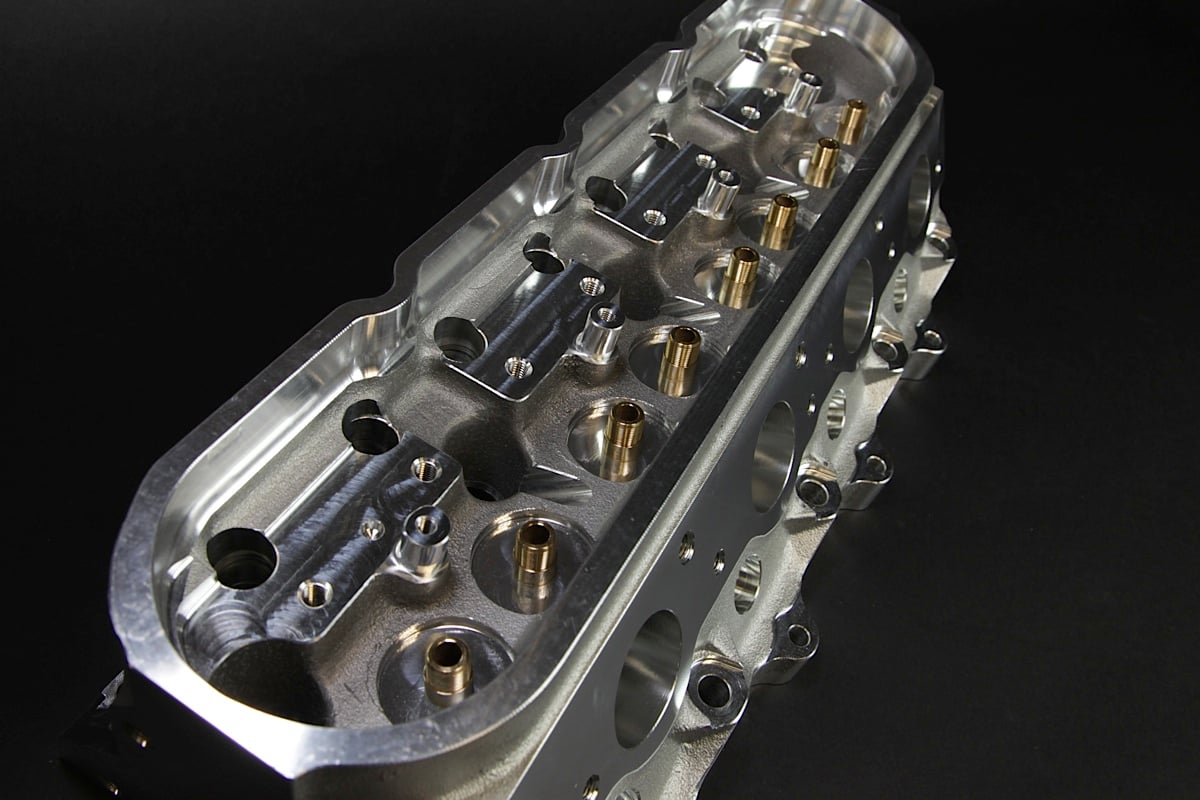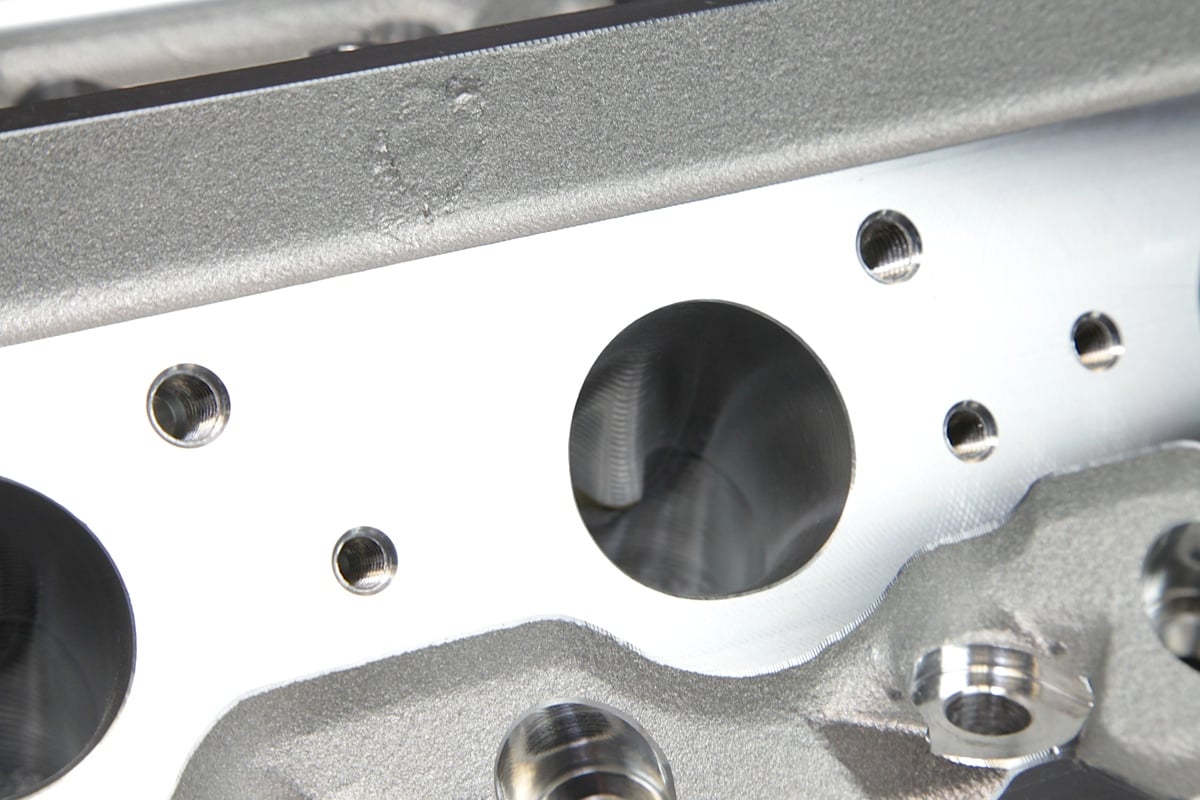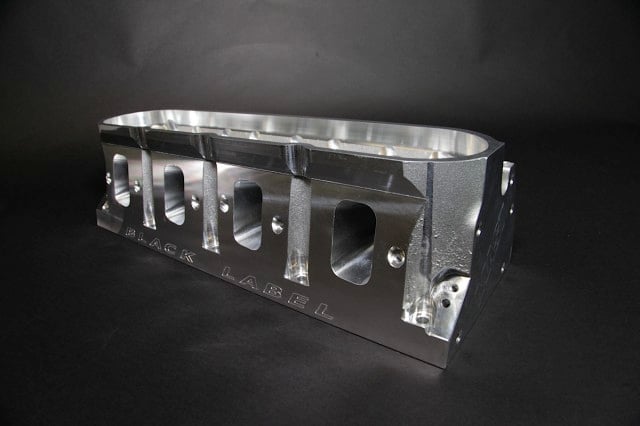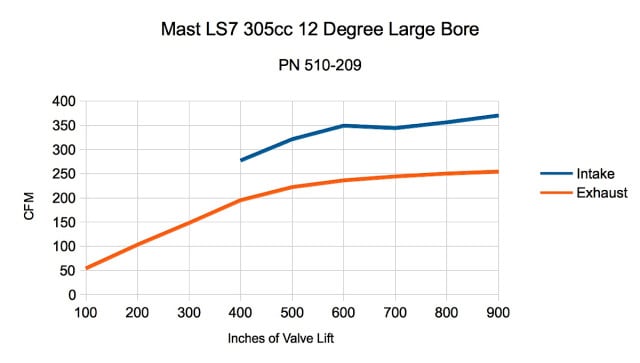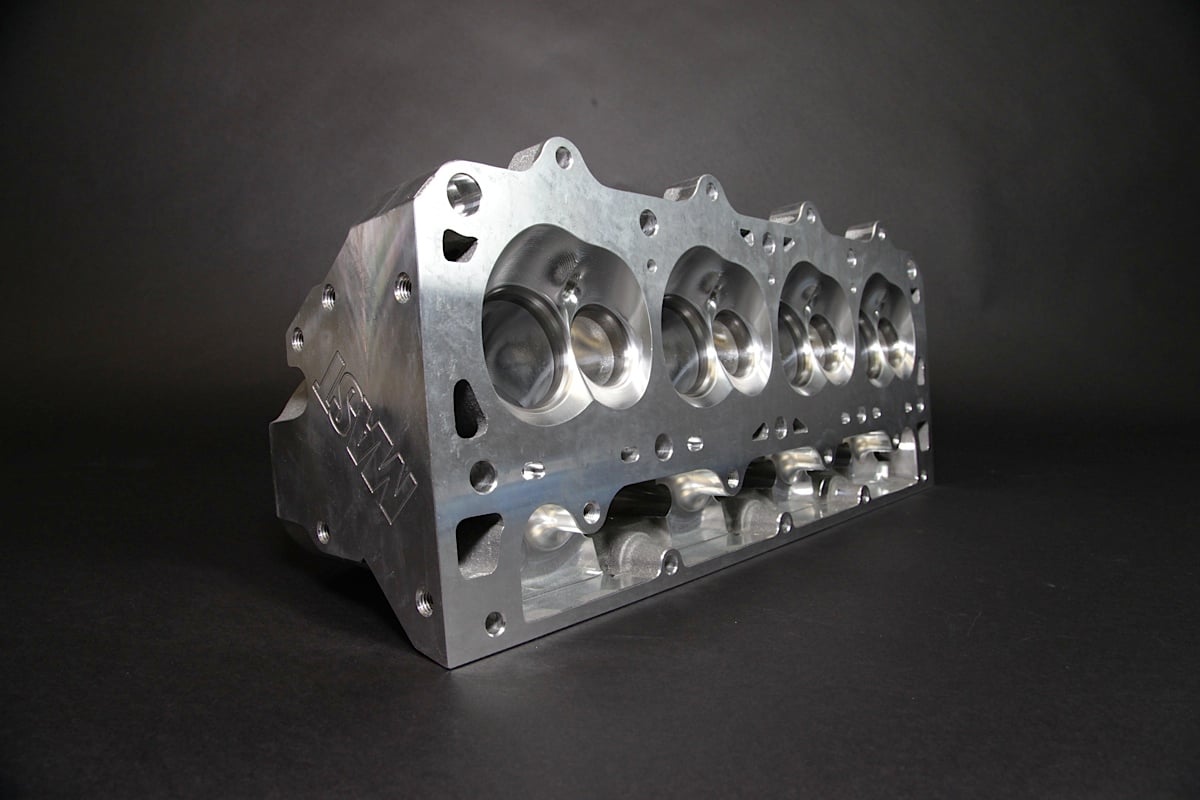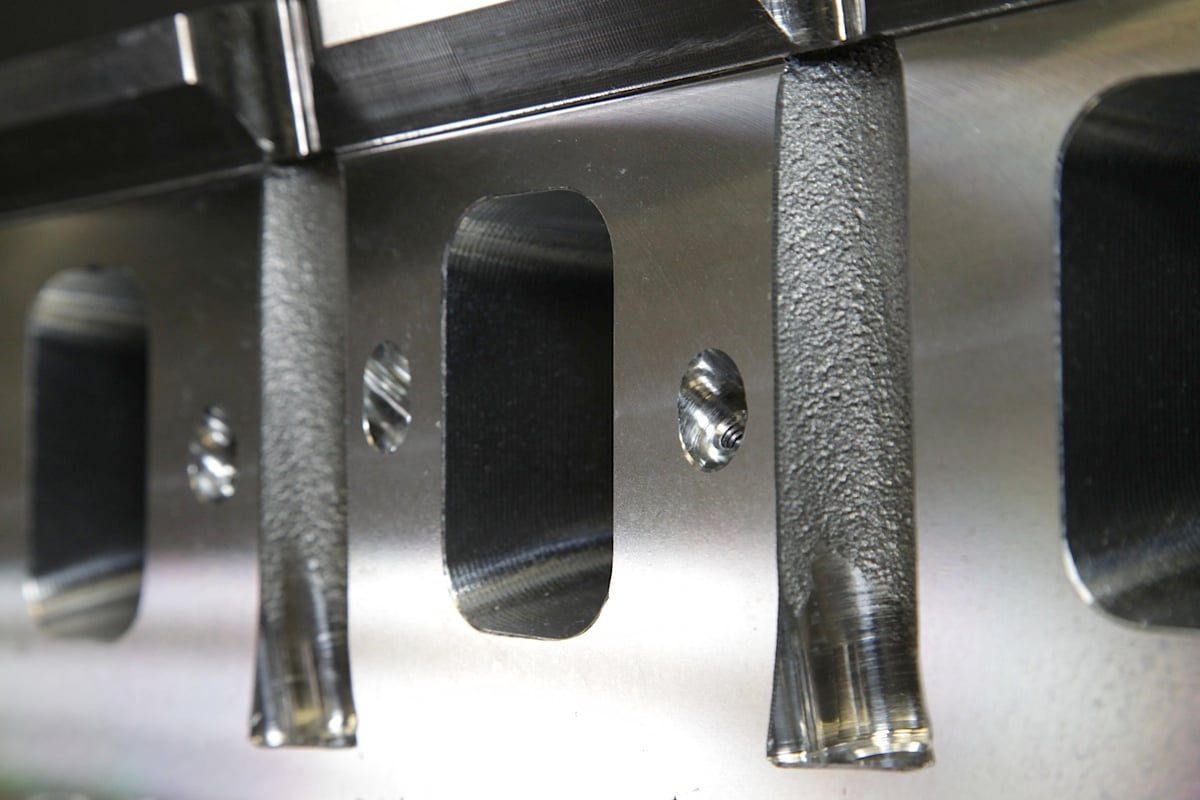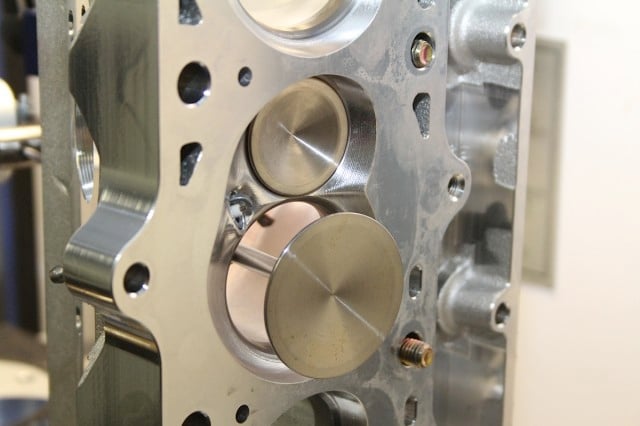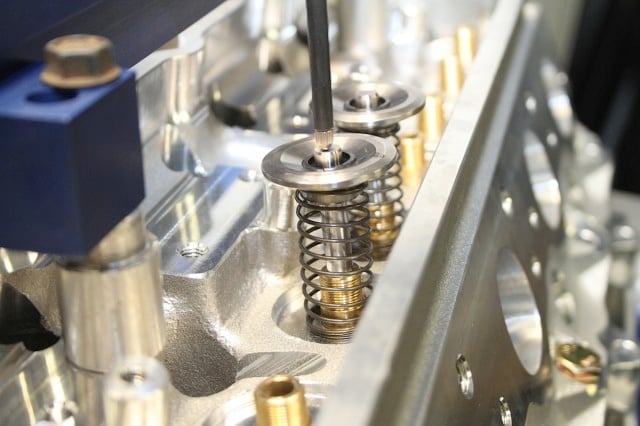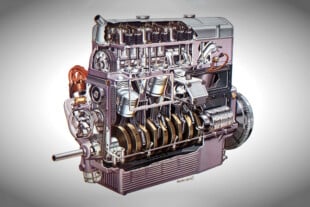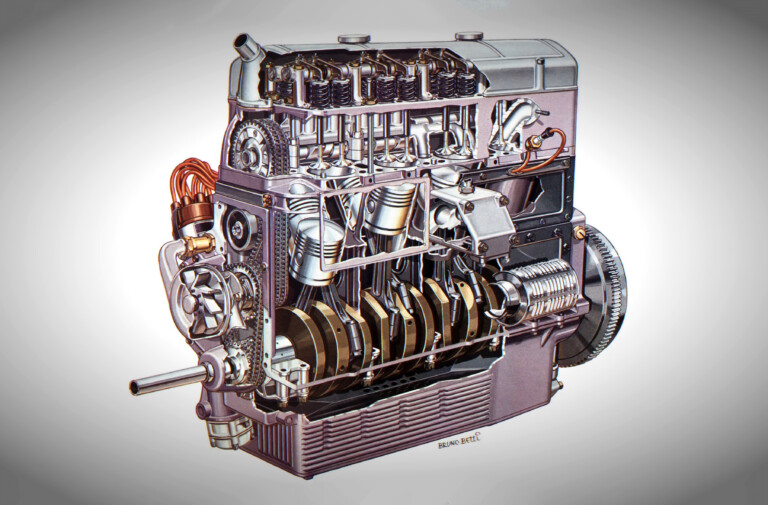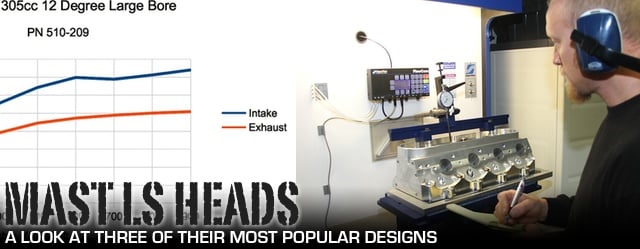
The LS engine was a game changer when first introduced in 1997. With factory cylinder heads that posted flow numbers traditional small-block Chevy builders sweated blood to pull from full race heads “back in the day,” it seemed like there might not be a lot of room left for the aftermarket to work with. But motivated people always find a way, and today there are scores of different hot-rod heads available in both cathedral port and square port configurations.
Test Equipment
To do our own hands-on testing of the Mast heads, we used our in-house SuperFlow SF-750 flow bench. At a pressure differential of 25 inches of water, it’s capable of flowing up to 660 cubic feet of air per minute, and unlike traditional flowbenches with mechanical manometer gauges, it has a fully digital FlowCom digital airflow measurement system that eliminates the need for calculation to adjust for test temperature and barometric pressure.
The SF-750 also has an automatic motor control that relieves the operator of the duty of constantly riding herd on test pressure to keep the results consistent. Compared to the flow benches we grew up with, the SF-750 is much faster to use, more accurate, more repeatable, and light-years less sensitive to the skill and experience of the operator when it comes to getting good results.
SuperFlow manufactures flowbenches for practically any motorsports airflow measurement application you can think of, from the tabletop SF-260 all the way up to the big daddy SF-1020 SuperBench, which can pull 1,100 CFM at 25 inches of water.
To get a bit of insight into how Mast coaxes velocity and flow out of machined aluminum, we tested a trio of their LS heads – two LS7 style, and one cathedral port – and quizzed Mast’s Chris Durrett and Cary Chouinard about how they’re designed.
Up First: Cathedral Port
The LS1/2/6 cathedral port head design, while a huge advance over the previous generations of small-block Chevy heads, has largely been overshadowed in public perception by the Gen IV square port LS3 and LS7 factory heads.
Nevertheless, Mast recently introduced a brand new pair of 12-degree cathedral port heads in 275 and 295cc intake port sizes specifically for big bore (4.125+ inch) applications. These heads join their existing pair of cathedral port castings:
The 295cc head we tested is designed for Gen IV short blocks and is set up for six-bolt retention, compatible with the GM LSX and RHS aftermarket blocks. Valves are 2.250-inch on the intake side, and 1.600 on the exhaust, and the combustion chamber volume is 69cc. The deck thickness is a full three quarters of an inch, and the head utilizes LS7-style valvetrain components.
So why offer a head like this in what some consider an outdated port layout? Per Mast’s Chris Durrett, “The cathedral port is a great design that builds great low to mid-range power. Before we offered the 275, and now this 295, there was not a cathedral head on the market that would move enough air for the 427ci-and-up crowd.”
“The majority of customers running this head are drag racers that have smaller cathedral port heads on big displacement engines, leaving a lot of power on the table,” Durrett explains. “Instead of having to switch intakes, they are able to swap heads and find that ‘lost’ horsepower. I have customers that say they have picked up three tenths in the 1/8th mile by swapping from a competitor’s head to our 295 and making no other changes.”
Mast's big cathedral port heads feature a 295cc intake port volume, 69cc combustion chambers, and are set up to accept LS7-style valvetrain components.
With as much flow capability as these heads have, you might wonder what choices are out there in matching cathedral port intake manifolds that can keep up. Durrett explains, “For guys going road racing, a FAST 102 would work great – the truck version would be ideal. Drag race guys should go with our LS1 4500 Single Plane Intake for maximum performance.”
Dare To Be Square
Moving forward, we come to Mast’s raised square port LS7 heads. They’ve got three different sizes of LS7 heads, designed to match specific bore sizes: The 11-degree 265cc head intended for 4.000+ bores, the 12-degree 285cc head for 4.125+ bores, and the line-topping 12-degree 305cc head, also for 4.125+ bores. The 265 is configured to accept LS3-style valvetrain hardware, while the 285 and 305 both use LS7-type rockers.
Smaller valve sizes require more lift to obtain the required curtain area, so we may compensate with a larger valve even though it will be shrouded by the cylinder wall. – Cary Chouinard
“Shrouding is a factor,” explains Cary Chouinard, Mast’s Director of Manufacturing. “Not as much as some may think though. We like to maintain at least .080-inch radial clearance around the valve. This is more important on the intake side since it is not pressurized like the exhaust.” In a naturally-aspirated engine, the relatively low pressure differential between the outside world and the partial vacuum pulled by the descending piston is all you have to work with to get air past the intake valve, but that’s not the case with the exhaust side where there’s plenty of energy available.
Chouinard continues, “When you are limited by bore size, this obviously affects the maximum valve size you can use. Depending on the application, we will go beyond our normal valve-to-bore ratio. Smaller valve sizes require more lift to obtain the required curtain area, so we may compensate with a larger valve even though it will be shrouded by the cylinder wall. This is OK when proper airspeed can be controlled properly around 75 percent of the valve. This is where a canted intake valve comes into play and is preferred.”
Mast's 265cc 'medium bore' LS7 heads have nominal 70cc combustion chambers, and accept LS3-style rockers.
Go Big or Go Home?
For those who truly need the flow capacity, Mast offers their range-topping 305cc LS7 heads. While a “bigger is better” philosophy might be appropriate if you’re building a high school football stadium in Oklahoma, or a social media network, it’s not wise when selecting heads for an LS, because when it comes to cylinder filling, air velocity is king.
A higher port velocity and airspeed will be more forgiving and be less temperamental. – Cary Chouinard
Per Chouinard, “A smaller, higher velocity port will have a higher airspeed as the valve begins to close all the way to the valve being completely closed. With the intake valve closing after bottom dead center, there is no more negative pressure behind the valve, and with a higher airspeed at this point, the cylinder will continue to fill until the pressure normalizes on both sides of the valve.” The energy of the airstream essentially continues to fill the cylinder, rather than backing up.
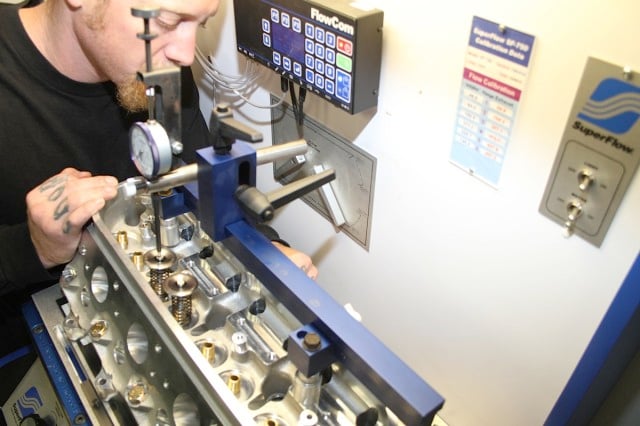 “A slower airspeed with too large of a valve size will require an earlier closing of the intake valve to avoid reversion back into the port,” Chouinard adds. “With that said, a higher port velocity and airspeed will be more forgiving and be less temperamental to the entire combination. A smaller port will also communicate better throughout the entire inlet system, making for better drivability at part throttle.”
“A slower airspeed with too large of a valve size will require an earlier closing of the intake valve to avoid reversion back into the port,” Chouinard adds. “With that said, a higher port velocity and airspeed will be more forgiving and be less temperamental to the entire combination. A smaller port will also communicate better throughout the entire inlet system, making for better drivability at part throttle.”
Of course, forced induction is a whole different animal – with the assistance of an artificial pressure differential, the engine no longer has to rely on the piston alone to draw in air during the intake stroke. Does that make a turbo or supercharged combination less sensitive to the size of the valves and ports?
Chouinard is unequivocal: “Yes, It does make it more forgiving, especially on the intake side. When you have a pressurized port, many things reverse compared to a N/A engine. With the efficiency of modern turbo and superchargers, drivability has improved and lag is significantly reduced. All valve events are looked at in a different aspect as well, and camshaft profiles now become much more important than cylinder head characteristics. The camshaft designer will usually look at cross sectional and curtain area much closer when making a decision.”
He also says that the size and shape of the combustion chamber add another layer of complexity to the equation. “When larger combustion chambers are required, it makes it more difficult to maintain the proper radial area around a valve,” he explains. “Typically, a smaller (closed) type chamber will flow better at higher valve lift than a chamber that is larger.”
Monster 305cc intake ports and 2.250-inch intake valves make these Mast heads the go-to choice for big bore, high-revving LS combinations.
It’s All Just Numbers
Chouinard stresses that getting the right cylinder head for your particular engine is about more than looking at the numbers – having an experienced guide can help maximize airflow (and horsepower). “Most cylinder head port gurus will agree on this and also understand that steady state flow testing is unrealistic to actual engine operating conditions, so for the most part, I throw as much of that out the window as I can. Buyers like to see numbers that keep rising through .800 lift even though their camshaft has a net lift of .650. I like to see average flow numbers on a street engine be their best from .300-.650. This is where the piston is traveling the most and the cylinder is filling at its highest rates. On most engines, the exhaust valve is still open at .250 intake lift.”
Lessons Learned
It’s tempting to pick cylinder heads based on port size or flow numbers, but like almost everything else about building a high-performance LS powerplant, the right answers flow from considering the engine as a whole. It’s not just the big things at play, like natural aspiration versus forced induction – bore size, intended operating rev range, piston design, and even combustion chamber volume all need to be factored in. Your best option, as always, is to talk to the experts like the folks at Mast Motorsports and let them help you find your way.



